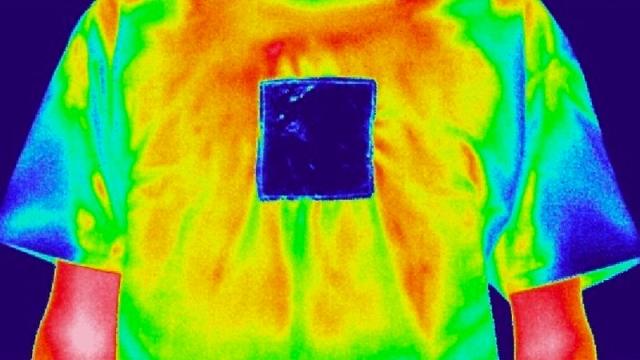The best way to ensure you’re always comfortable when you head outdoors is to layer your outfit so you can strip some clothing away when you’re hot, or add more when you’re cold. But what if one garment could work both ways? That’s what scientists are promising with a new engineered material that heats on one side but cools when turned inside out.
Packing for a weekend camping trip where you’ll have nothing but a backpack to carry everything you’ll need is a tricky balancing act — you have to bring enough clothing to keep you comfortable in any weather without over-stuffing your bag. It’s why companies like The North Face and Columbia pour a lot of money into the research and development of clothing that maximizes its ability to keep you comfortable while at the same time being lightweight and easy to pack. But what if instead of layering and de-layering, the shirt on your back could be just flipped inside out when the cool of the night transitions to a warm morning as the sun rises? It sounds like the holy grail of outdoor gear, and it may finally be here.
In a recently published paper in the Nano Letters journal, scientists from China’s Westlake and Zhejiang universities revealed they’ve created a new kind of layered textile using a fabric made of porous fibrous polymers so that it breathes like cotton (allowing sweat to evaporate and escape), but also does so much more. One side of the textile is covered in zinc and copper nanoparticles that serve to trap solar energy as well as reflect thermal radiation emitted by the wearer back towards their bodies. The other side of the textile does the opposite, using a hierarchically porous structure (it has pores of various sizes that are strategically arranged) to reflect the sun’s rays away while also allowing the heat from the human body to be radiated away and dissipated.
Testing a small square of the textile on simulated human skin under natural sunlight with the heating side facing out, researchers found it increased the underlying temperature by -10 degrees Celsius more than a square of simple black cotton could. Even at night without sunlight, the effects were still measurable, with a -15 degree Celsius increase compared to a simple cotton layer. When the textile was then turned inside out, under sunlight it was found to cool the surface of the simulated skin by -12 degrees Celsius more than a square of white cotton was able to.
The new textile could potentially revolutionise base layers and undergarments, making them more adaptable to changing weather conditions. Maybe one day the only reason you’d ever need a light jacket is to protect you from wind and rain. But the fabric has one other neat trick: The same way the Matrix PowerWatch battery-less smartwatch is able to power itself using just the temperature difference between the wearer’s skin and the air, the self-cooling/self-warming textile can generate a small amount of electricity when attached to a thermoelectric generator. So if the fabric ever finds its way into a garment available to consumers, you’ll not only be cool and comfortable when you hit the trails, you might even be able to charge your smartphone in the process.
